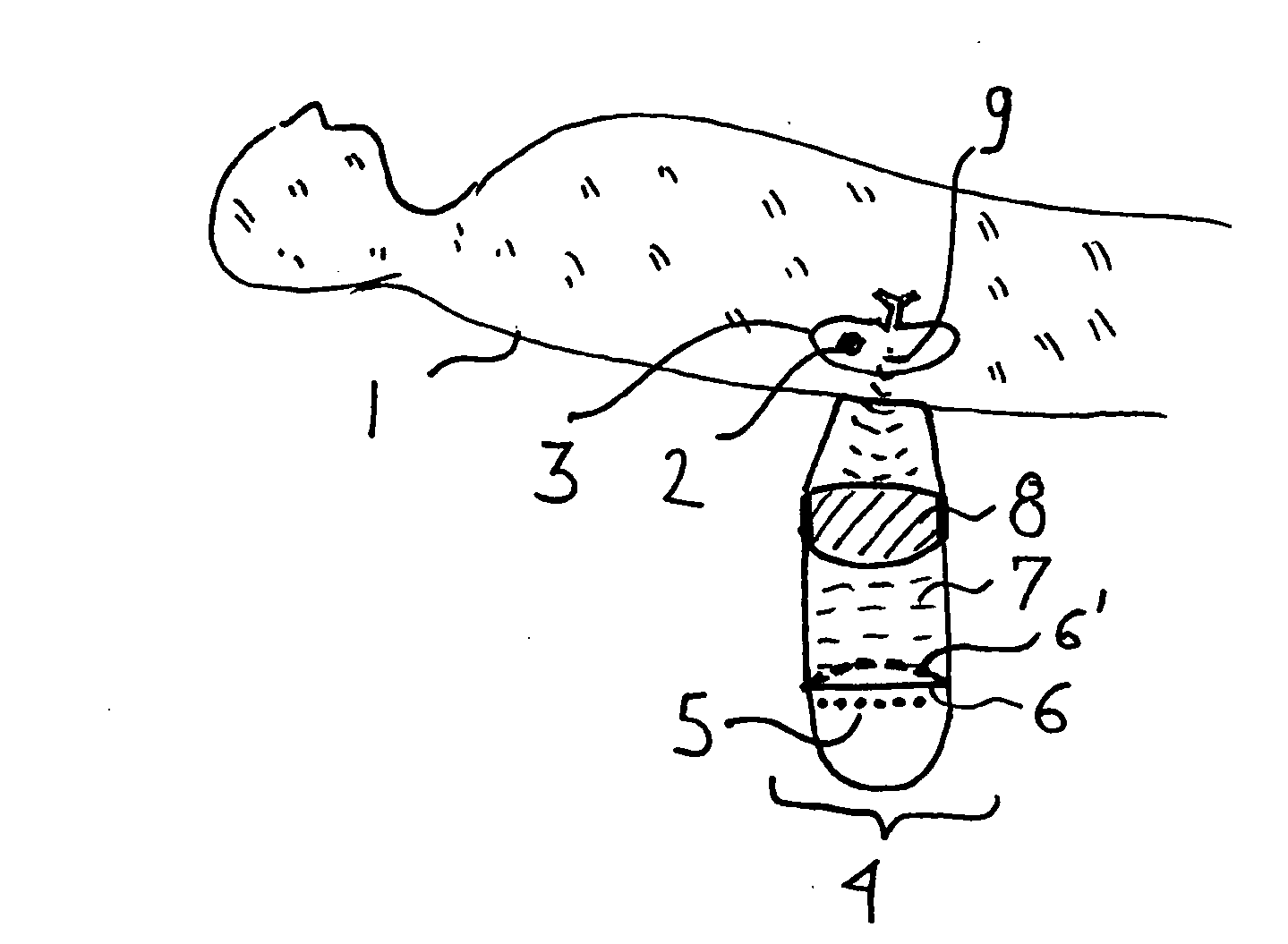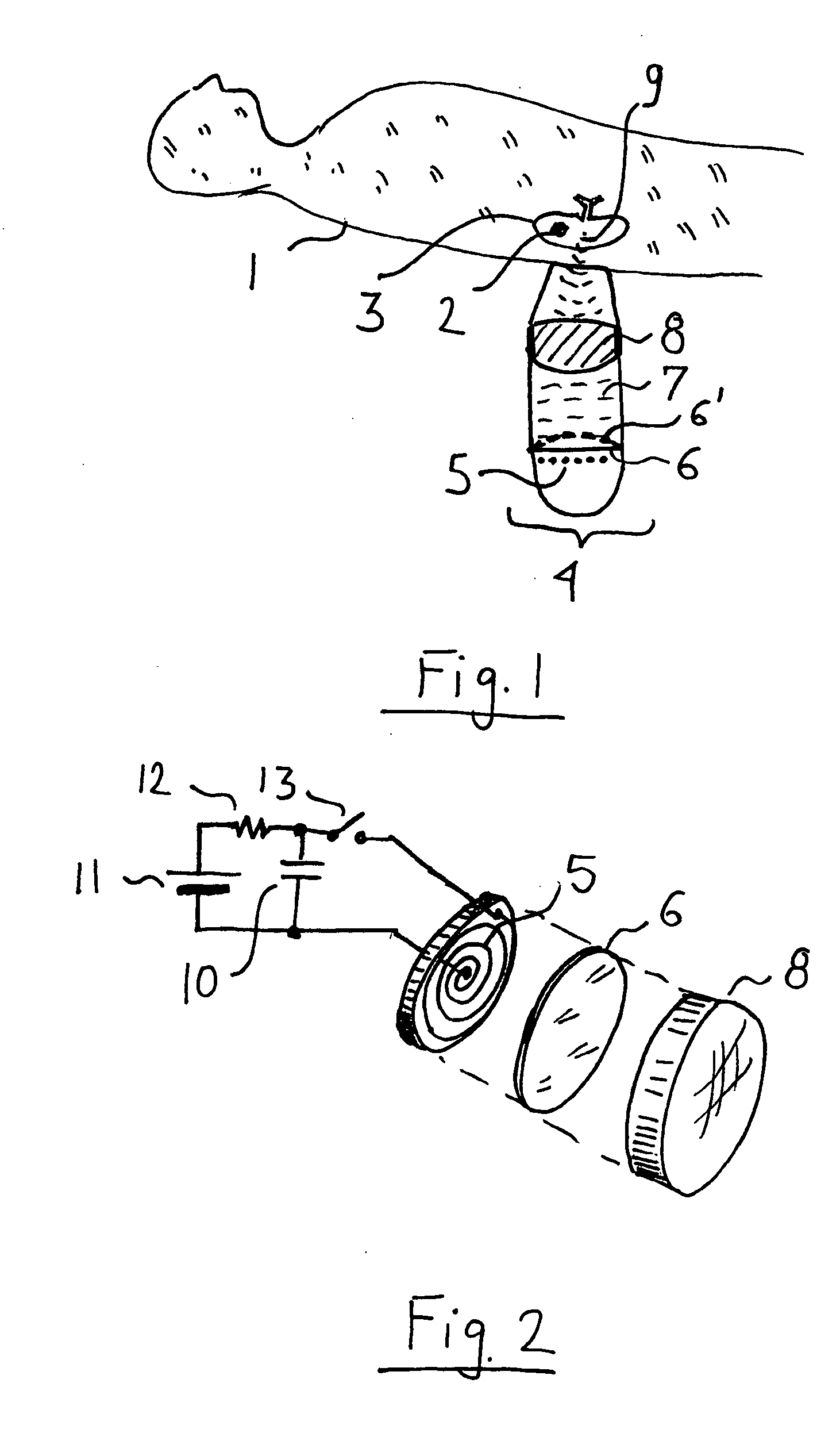Lithotripsy system with automatic 3D tracking
a technology of lithotripsy and tracking system, applied in the field of medical science, can solve the problems of reducing power density, unable to keep the shock wave focused on the stone, and damage to the kidney and other organs,
- Summary
- Abstract
- Description
- Claims
- Application Information
AI Technical Summary
Problems solved by technology
Method used
Image
Examples
Embodiment Construction
[0026]A typical lithotripsy system is shown in FIG. 1. A patient 1 has a stone 2 (also known as calculus) inside kidney 3. A lithotripsy head 4 generates a focused shock wave 9 which disintegrates the stone 2. The shock wave is generated by an electromagnetic transducer comprising of coil 5 and diaphragm 6. When a very large current pulse is passed through coil 5 it repels diaphragm 6 (which acts as a short circuited secondary coil). Diaphragm 6 bends briefly into shape 6′ and creates an acoustic shock wave in liquid 7, typically water. Lens 8 focuses shock wave 9 into a small area. Head 4 has to make intimate contact with body 1 at all times. Acoustic lens 8 operates similar to an optical lens and is made from a material having slower (for convex lens) or faster (for concave lens) acoustic velocity than water. Shock wave velocity in water is about 1500 m / s. For slower velocity polymers can be used, for higher velocity some polymers and most metals can be used. A more detailed view ...
PUM
 Login to View More
Login to View More Abstract
Description
Claims
Application Information
 Login to View More
Login to View More - R&D
- Intellectual Property
- Life Sciences
- Materials
- Tech Scout
- Unparalleled Data Quality
- Higher Quality Content
- 60% Fewer Hallucinations
Browse by: Latest US Patents, China's latest patents, Technical Efficacy Thesaurus, Application Domain, Technology Topic, Popular Technical Reports.
© 2025 PatSnap. All rights reserved.Legal|Privacy policy|Modern Slavery Act Transparency Statement|Sitemap|About US| Contact US: help@patsnap.com



